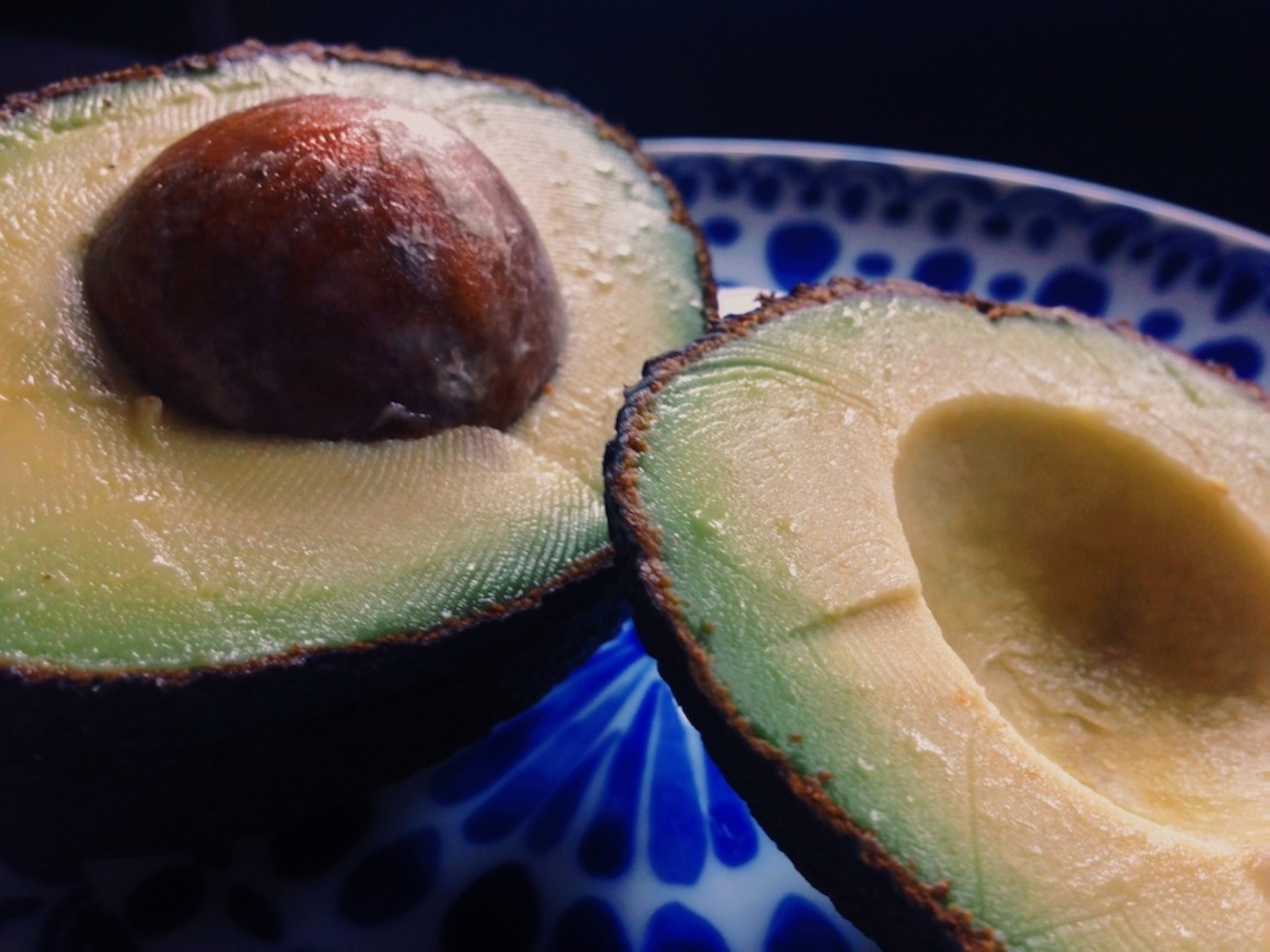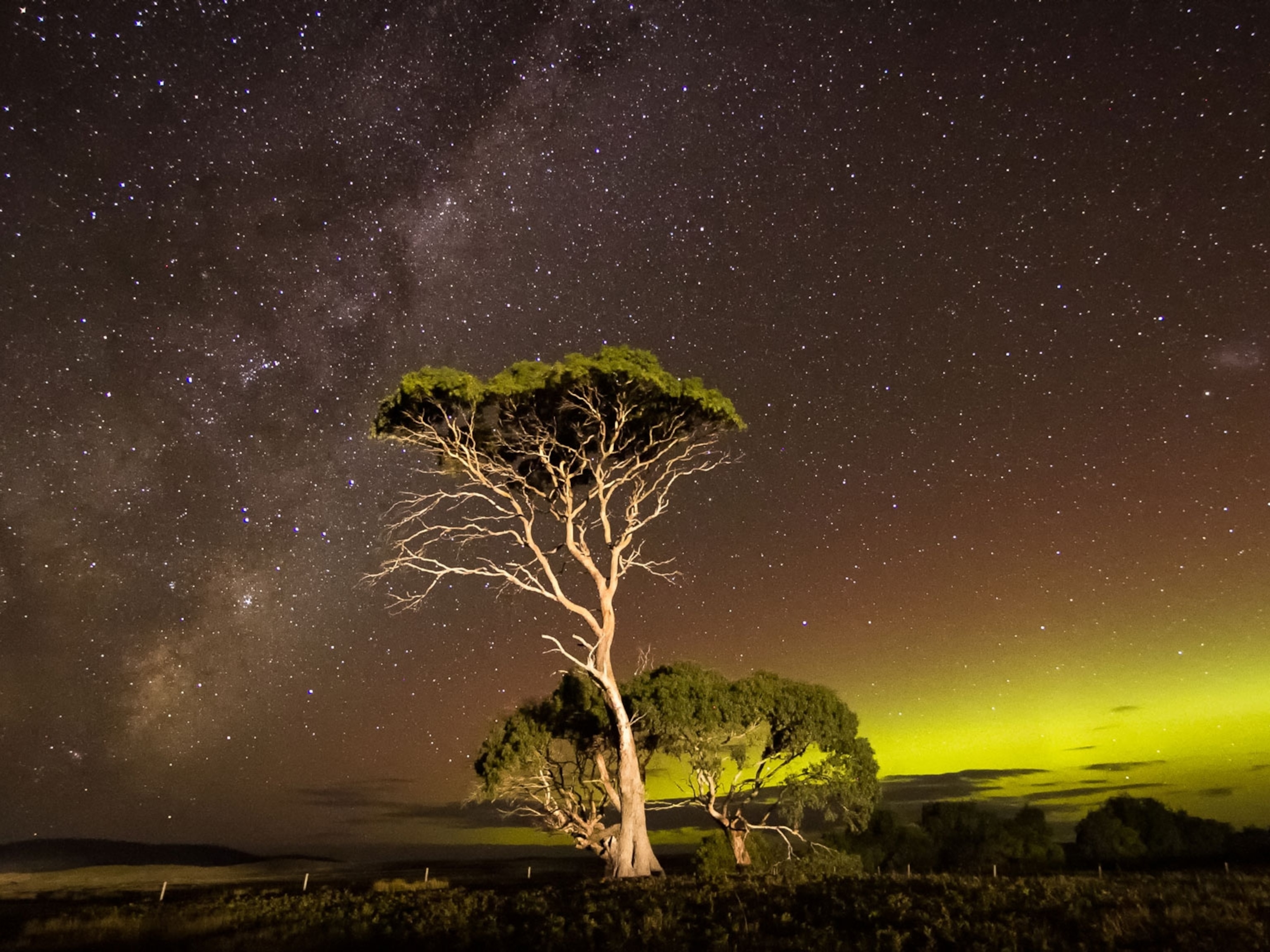
You’re Eating Too Many Avocados
The avocado, that green, slimy, deliciously fatty fruit, the one chiefly responsible for bringing guacamole to humanity—and in recent years earning the rare and elusive title of a super food—is a botanical anomaly that shouldn’t exist. It should have disappeared long ago.
Avocados come from an era before humans, when gomphothere, large elephant-like creatures that lived two million years ago, walked the earth and ate the fruits by the dozen. Avocados, like any other plant, grew with the ambition of spreading seeds and avocado seeds could only be eaten—and later pooped out—by large animals with big enough throats. When gomphothere went extinct, avocados lost their chief consumer. Yet, as Connie Barlow wrote in her 2002 book The Ghosts of Evolution, avocados somehow remained clueless that the animal had disappeared. As if by the same divine providence that led the Aztecs to invent guacamole in the 16th century, avocados somehow knew that if they just held on until man arrived, they’d have a bright and plentiful future.
When humans started refining their tastes, the avocado was deemed delicious enough to be grown in increasing quantity, and never in greater abundance than during the last two decades. Global consumption, according to the U.N. Food and Agriculture Organization, has more than doubled since 1993. In that same time, American demand tripled.
But there are signs avocados may be headed for a quinoa moment, when production can’t keep up with demand. When that high-protein South America grain found bourgeois popularity in the early 2000s, demand stretched the farmers who grew the indigenous grain to the point that their own families couldn’t afford to eat quinoa, a staple in their diets for generations. The price was simply too attractive to save the grain for themselves, until the market flooded with cheaper, lower quality quinoa and those farmers were left with big fields and high debts.
Avocados aren’t on the verge of global domination; they’re already there. But their popularity has similarities to quinoa’s rise. When the avocado growing season ends each fall in California, farmers kick into higher gear in Mexico and Chile, where Hass avocados are so lucrative, the fruit is called oro verde, or green gold.
With anything that fetches a high price at market, there are constraints. In Mexico, the biggest avocado producer, avocados have mirrored the trajectory of limes, attracting the attention of cartels that extort money from farmers. According to a report by Vocativ about the dark side of guacamole, the $1 billion avocado trade from Mexico to the U.S. was too valuable for a group of traffickers known as La Familia to ignore. “Not content to traffic marijuana, cocaine and heroin, La Familia set up a variety of extortion rackets,” Vocativ‘s Jan-Albert Hootsen reported. “The avocado business was one of them.”
Further south in Chile, the trade isn’t as lethal, but it’s far from comfortable for legacy farmers like Ricardo Sangüesa, an avocado producer that the food news website Civil Eats found in Chile’s Ligua Valley, where wells are running dry. Avocados require significant amounts of water—about 1 million gallons per acre of avocado trees, or about the same amount as oranges or lemons. It’s a drought year in the fertile areas of central Chile, yet even in non-drought years, there isn’t enough water to feed a crop that, since the early 90s, has grown from 9,000 to 73,000 acres. Large- and small-scale farmers have clobbered each other for water, drilling wells deeper and deeper. They’ve also planted avocado trees on hillsides to be further upstream of glacier runoff.
It doesn’t take an agronomist to see that this sort of arms race to meet ballooning American appetites is unsustainable in the long term. Even in the present, it sets certain growers up for failure, including small farms with shallow wells and nearby villages with dry taps. Mortgaging the future to make money in the present sets up the question: Where will tomorrow’s avocados be grown? It’d be hard to remove them from Mexico’s Michoacán state or Chile’s Ligua valley, where the temperate coolness is as prime an environment as may exist anywhere.
The more likely solution might be in the seeds—the same evolutionarily defunct seeds that might have vanished like the dodo. Farmers in Mexico are trying to genetically engineer an avocado that grows with less water. Regulators in Chile are debating how to distribute groundwater in a way that’s fair and equitable. Ultimately, farmers who can’t keep up with demand may focus less on volume and more on quality of the avocados they can produce. No matter the choice, the supermarket product will be the same: a more expensive avocado.





